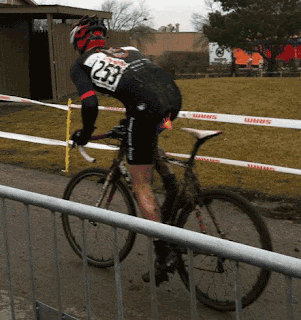If you ride a bike as much as I do, then there is a very good chance that you have had a dealing or two with cycling’s giant pain in the ass, the saddle sore.

Saddle Sore Volcano
At this point, I realized what I had, a saddle sore. One of those things that almost all cyclists deal with, but don’t much talk about. Off to the internets I went to learn what I was dealing with. Saddle sores are boils that are caused by bacteria in skin abrasions. What that means is, where there is friction, there is abrasion, and bacteria in those areas can cause infections that turn into boils. Joy.
Back in my earlier days of cycling, I never got them. I didn’t even know what they were. Never used chamois cream, and sometimes, didn’t even use shorts with a chamois, and nadda. Then one day about three years ago, three days before a mountain bike race, I discovered what I thought was an infected ingrown hair in my land down under. This is when I learned a very important rule of saddle sores, do not try to pop and drain them, they don’t drain, they get worse. Very much worse.
Below are some bullet points on saddles sores. How you get, treat, and prevent them. The longer you let them go, the worse they get. Prevention is the best medicine, but once you got one, the faster you take care of it, the sooner it goes away.
How do you get saddle sores?
- Friction is the start. Friction can come from a saddle that doesn’t fit your body well, a chamois, lack of chamois cream, saddle position, or just a lot of time in the saddle.
- Once the friction has torn the skin, a bacterial infection can set in. This is the start of the sore.
- Improper bike fit.
How do you treat saddle sores?
- Wash with soap and water after you ride.
- Dry off infected areas well. Use baby powder or corn starch to help remove moisture and keep areas with sores dry.
- Use an anti-biotic on the sore after washing and drying
- If you can, stay off your bike for a few days until said sore is gone. If you have to ride your bike, try a gel seat cover on your saddle to reduce pressure and friction on the sore.
The key to treating saddle sores is clean, dry, and no friction.
How can you prevent saddle sores?
- Get out of your chamois as soon as you can after a ride.
- Wash bike shorts between uses. Allow to hang dry for 3-5 days to allow bacteria to die off in the chamois.
- Never wear a dirty or used chamois.
- If you ride everyday or multiple days per week, get more pairs of bibs or shorts.
- Use bibs instead of shorts. Bibs hold the chamois in place, while shorts allow for more movement of the chamois during your ride.
- Bike fit. Improper fit can lead to high friction areas.
- Stand up! Get your butt out of the saddle at least every 15-20 minutes.
- Chamois cream. We recommend Enzo’s Buttonhole Cream.
Tips for dealing with saddle sores?
- Gel saddle cover. Relieves pressure on the infected area. I used to knock the gel saddle cover, until I did a 180 mile ride in 2 days with a volcano sized saddle sore. Use it until the sore is gone, or when you ride your bike without bike shorts.
- Mitten full of chamois cream. It may feel a bit on the smooshy side at first, but if you have to ride, your taint politely will thank you.
Here are some resources and more information I found on the topic:
http://www.roadbikerider.com/injuries/how-solve-saddle-sores
http://en.wikipedia.org/wiki/Saddle_sores
http://www.active.com/cycling/Articles/Home-Remedies-for-Saddle-Sores-and-Chamois-Rash.htm
http://www.bikeradar.com/gear/article/health-sorting-saddle-sores-25103/
I am going off what I have learned during my experiences. If you have more information, experiences, or even stories to share, comment below.








0 Comment